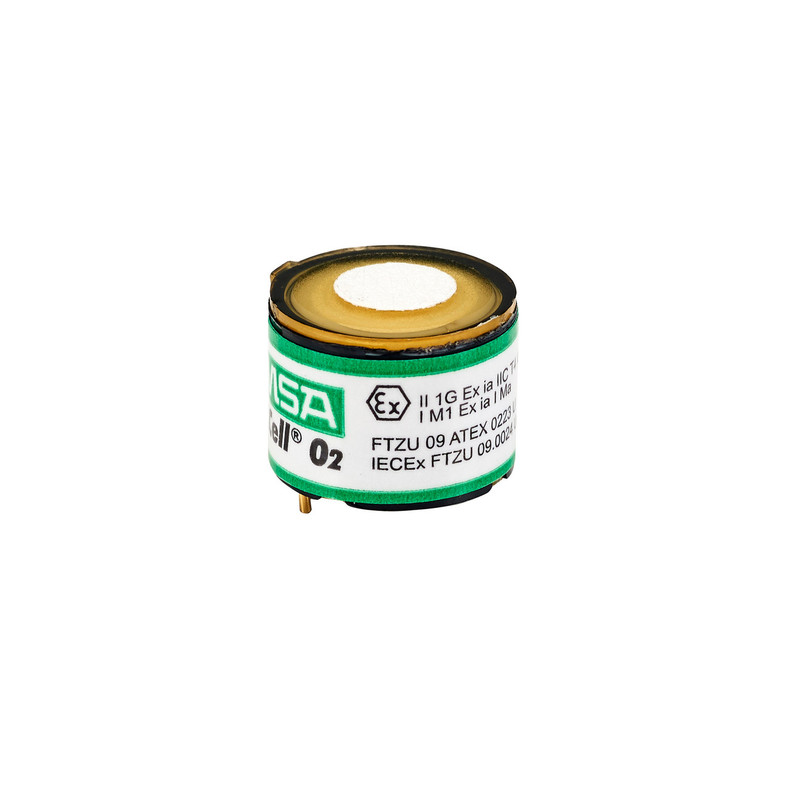MSA XCell sensors, used in the MSA Altair 4X, Altair 4XR, and Altair 5X, have been around for a while and I think it's about time to talk about some benefits we've seen. I'll talk about benefits provided by the manufacturer first, and then follow up with a few thoughts from what we've seen in the service shop. Sensors covered by this article are:
- MSA XCell Oxygen Sensor for Altair Series Detectors - 10106729
- MSA XCell CO/H2S Sensor for Altair Series Detectors - 10106725
- MSA XCell LEL Sensor for Altair Series Detectors - 10106722
First, a summary from MSA's documentation:
MSA XCell Sensors
Overview: MSA XCell Sensors represent a breakthrough in sensor technology, designed for enhanced performance, reliability, and efficiency in gas detection. Featuring proprietary embedded ASIC (Application-Specific Integrated Circuit) microchips, these sensors offer superior control, faster response times, and shorter calibration periods, significantly reducing maintenance costs and downtime.
Key Features:
- Advanced ASIC Technology:
- Each XCell sensor includes an ASIC microchip that drives the sensor and converts its output to a digital signal.
- This technology enables real-time environmental corrections, plug-and-play capabilities, and greater RF immunity.
- Extended Sensor Life:
- MSA XCell Sensors typically have a lifespan of more than four years, which is double the industry average.
- This longevity translates to fewer replacements and lower overall maintenance costs.
- Superior Response Time:
- The sensors provide industry-leading response times, crucial for timely detection of hazardous gases.
- This rapid response helps ensure immediate action can be taken to protect lives and property.
- Robust Construction:
- State-of-the-art automated assembly ensures greater control and reliability.
- Laser-welded sensor housings eliminate the risk of leaks.
- Sensors can withstand harsh environmental conditions and physical impacts, making them suitable for various industrial applications.
- End-of-Life Warning:
- XCell sensors are equipped with end-of-sensor-life warnings, minimizing downtime and ensuring timely replacements.
- Cost Efficiency:
- Reduced calibration and bump test times save on calibration gas and maintenance efforts.
- The long life and durability of the sensors contribute to significant cost savings over the equipment's lifespan.
Performance and Reliability: MSA XCell sensors are designed to provide stable and accurate readings with minimal cross-channel interference. Their robust filters ensure resilience against poisons and inhibitors, maintaining sensor performance even in challenging environments.
Applications: MSA XCell Sensors are versatile and can be used in various industries, including:
- Oil and Gas
- Mining
- Chemical Manufacturing
- Food and Beverage
- HVAC
- Wastewater Treatment
- Fire and HazMat
- Heavy Manufacturing
Specific Sensor Details:
- Combustible (LEL) Sensors: Fast response times for detecting lower explosive limits, with a lifespan exceeding four years.
- Oxygen (O2) Sensors: Reliable detection with immunity to pressure spikes, operational in extreme temperatures.
- Carbon Monoxide (CO) and Hydrogen Sulfide (H2S) Sensors: Dual-toxic sensors providing rapid detection and extended operational life.
- Specialty Gas Sensors: Including sensors for sulfur dioxide (SO2), nitrogen dioxide (NO2), ammonia (NH3), and chlorine (Cl2), each tailored for specific industrial applications.
All the above is good information, but on our end I wanted to mention a couple of things to watch out for.
1. Their oxygen sensor works great and lasts a long time, unless it has a failure, in which case it has the potential to damage your board if chemicals from the sensor leak out. For this reason I highly recommend removing oxygen sensors from MSA gas detectors as soon as you notice a failure. The longer they sit with a failed O2 sensor, the higher the potential for a leak. If you have a leak before the end of their warranty period you can send the monitor to us and we'll get you a warranty repair from MSA.
2. LEL sensors have not 1 but 2 sets of catalytic beads. Imagine it as 2 sensors in 1, with the detector switching the bead it uses when you restart or zero the instrument. Keep this in mind because when you calibrate the detector you'll want to calibrate it twice to make sure both sets of beads in the LEL are correctly calibrated. If you're finding issues with your sensor and it seems like it's happening every other day, this could be the cause.
Even with the above, XCell sensors from MSA are great sensors! They're stable, long lasting, and fast to calibrate.
Keep all the above in mind, and give us a call if you have any questions!

